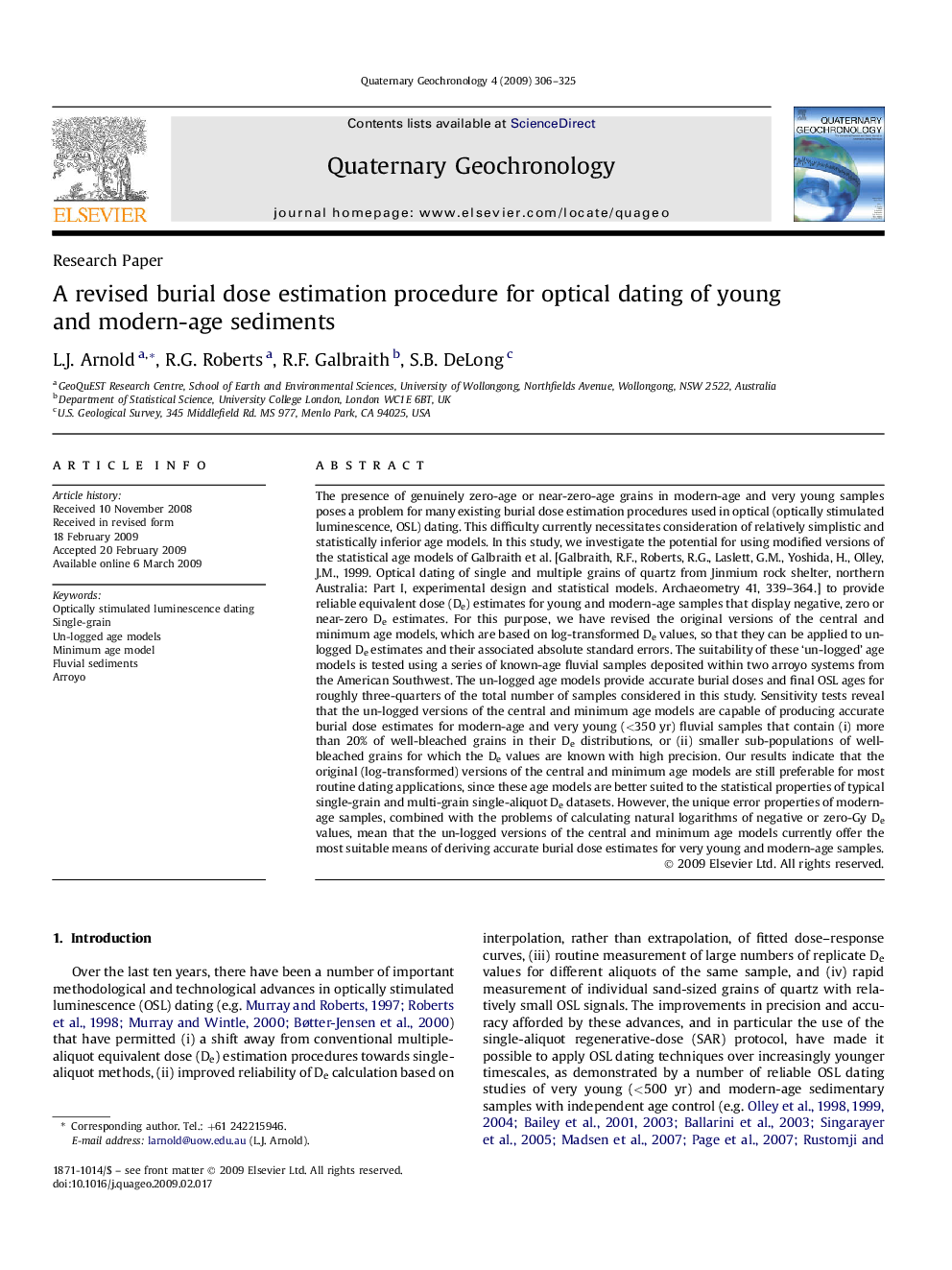| کد مقاله | کد نشریه | سال انتشار | مقاله انگلیسی | نسخه تمام متن |
|---|---|---|---|---|
| 4725227 | 1355970 | 2009 | 20 صفحه PDF | دانلود رایگان |

The presence of genuinely zero-age or near-zero-age grains in modern-age and very young samples poses a problem for many existing burial dose estimation procedures used in optical (optically stimulated luminescence, OSL) dating. This difficulty currently necessitates consideration of relatively simplistic and statistically inferior age models. In this study, we investigate the potential for using modified versions of the statistical age models of Galbraith et al. [Galbraith, R.F., Roberts, R.G., Laslett, G.M., Yoshida, H., Olley, J.M., 1999. Optical dating of single and multiple grains of quartz from Jinmium rock shelter, northern Australia: Part I, experimental design and statistical models. Archaeometry 41, 339–364.] to provide reliable equivalent dose (De) estimates for young and modern-age samples that display negative, zero or near-zero De estimates. For this purpose, we have revised the original versions of the central and minimum age models, which are based on log-transformed De values, so that they can be applied to un-logged De estimates and their associated absolute standard errors. The suitability of these ‘un-logged’ age models is tested using a series of known-age fluvial samples deposited within two arroyo systems from the American Southwest. The un-logged age models provide accurate burial doses and final OSL ages for roughly three-quarters of the total number of samples considered in this study. Sensitivity tests reveal that the un-logged versions of the central and minimum age models are capable of producing accurate burial dose estimates for modern-age and very young (<350 yr) fluvial samples that contain (i) more than 20% of well-bleached grains in their De distributions, or (ii) smaller sub-populations of well-bleached grains for which the De values are known with high precision. Our results indicate that the original (log-transformed) versions of the central and minimum age models are still preferable for most routine dating applications, since these age models are better suited to the statistical properties of typical single-grain and multi-grain single-aliquot De datasets. However, the unique error properties of modern-age samples, combined with the problems of calculating natural logarithms of negative or zero-Gy De values, mean that the un-logged versions of the central and minimum age models currently offer the most suitable means of deriving accurate burial dose estimates for very young and modern-age samples.
Journal: Quaternary Geochronology - Volume 4, Issue 4, August 2009, Pages 306–325